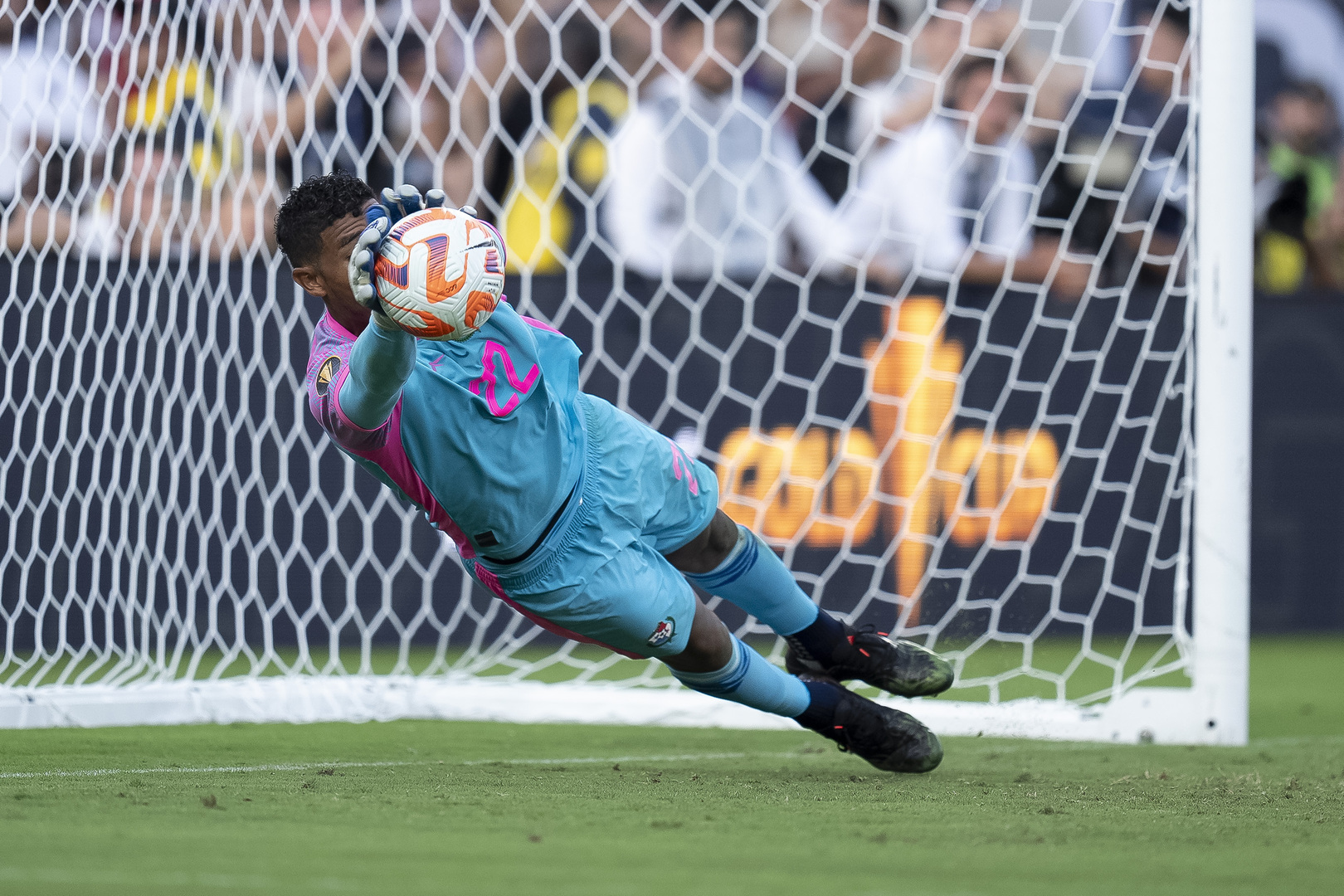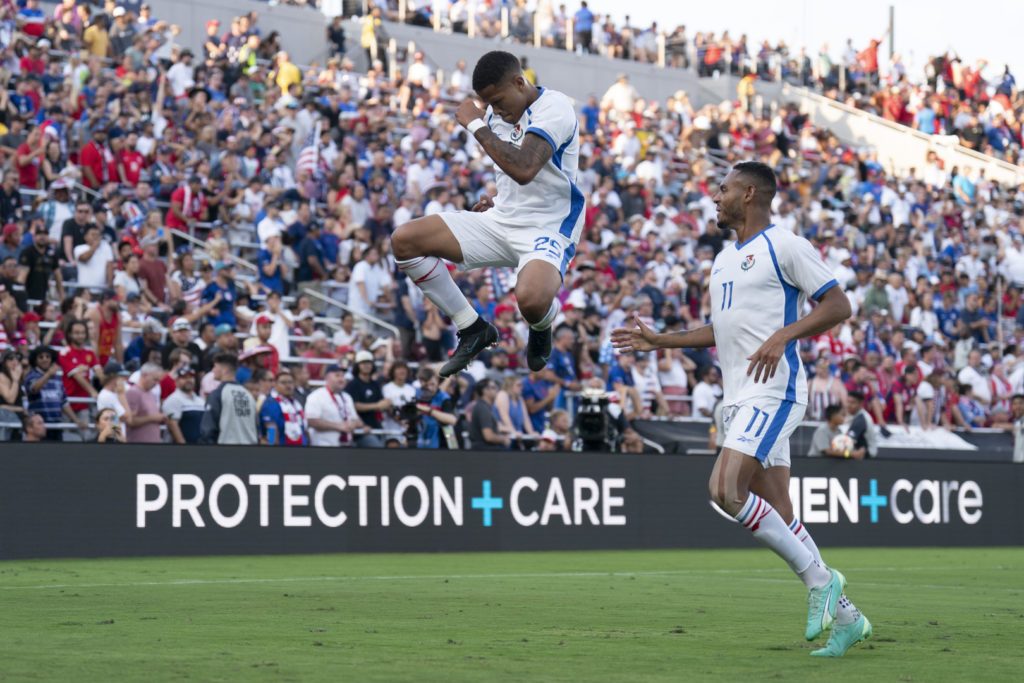By Sam Nicholson in San Diego
July 13 – Panama stunned a tired-looking USA who ran out of ideas in a Gold Cup semi-final that was settled on penalties 5-4. To get to penalties flattered the US on this first time visit to the Snapdragon Stadium for the men’s national team.
Kicking off in Southern Californian 95 degree+ heat, the predominantly US-supporting home crowd failed to create any kind of home advantage for the US team. The Panama players, who had virtually no support, could be heard in all four corners of the stadium as they belted out their national anthem.
It was perhaps an omen for a US team whose superstar youth who had performed so well to win the Nations League but had returned to Europe to their clubs. If this was a tournament that was meant to help preparation of a competitive team for the 2026 World Cup it now looks like an opportunity wasted.
It also signalled the end of the US’s unbeaten 29 game run against Concacaf opposition and the final match of BJ Callahan’s interim term as US head coach. Callahan’s term started spectacularly but has ended in real disappointment.
It was the second time in four days the Americans had been pushed to 120 minutes and a penalty shoot-out. They will now pass their Gold Cup crown on to either Mexico or Panama on Sunday.
The US set the early tempo, pressing high and creating a chance within a minute that came off the post. Followed by momentum, high pressure and home advantage: the U.S looked the most threatening in the first 10 minutes, getting behind the Panama back five three times with probing passes and willing runners.
In the 11th minute Turner made a routine save that signalled the emergence of Panama’s threat and flow of their game plan.
In the 21st minute a Panama whipped cross from the left side was met by a header that should have challenged Tuner to make a save.
In the 28th minute, a training ground move saw a Panama short corner worked back into possession to then deliver a ball over the top that ends with the ball in the back of the net but Édgar Bárcenas is ruled marginally offside.
Panama were attacking in waves. On 39 minutes a cut back in the 6 yard box should have been drilled home. On 43 minutes a well worked give and go forces a Matt Turner mistake that could have ended up anywhere but to no Panama avail.
If the US set the tone at the start, as the half progressed Panama slowly took control of the game. Panama relentlessly played through the pressure and press of the U.S front three and would have been disappointed to end the half without being at least a goal up.
Tactically Thomas Christiansen was a step ahead of his counterpart.
Panama set up in a structured 5-4-1 when defending but quickly transitioned to a 3-4-3 in possession showing great composure and willingness to keep the ball and stretch to every inch of the pitch. The two midfield generals, Adelberto Carrasquilla and captain Anibal Godoy, dictated play allowing the Panama front three to stretch an at times wooden US back four.
The US stuck to their systematic and traditional 4-3-3. While they started the game with a high tempo, they lost footing and control of the game where final decision making and quality was lacking. The US had adjustments to make at half time but would have felt confident they could break holes in Panama’s transitional back 3 to 5 and vice versa.
Panama began the half as the US had started the game with an early goal scoring opportunity. But on 51 minutes the USA signalled that they were starting to find a rhythm and control in a game they have not had any grip of. A delivery from the right side failed to find a connection.
A minute later another chance was squandered by Brandon Vasquez. A direct ball, flicked on, was followed by a cross from the right side to an open and free header.
In the 56th minute the US crowd finally made themselves heard, with 31,000 screaming at the linesman for halting a US counter as they broke into the final third.
Callahan’s half time adjustments were working with his team holding a higher line through midfield and containing Panama in their half and starting to force technical mistakes at the back.
The US adjusted on the right, bringing on DeAndre Yedlin who injected some pace and energy to get outside and behind Panama to create the best chance of the game. Jesus Ferreira should have scored.
As Panama fatigue started to set in, the US established more possession. Callahan stuck to like for like changes while Panama also turned to their bench to change two of their front three.
With the full time score at 0-0 the game moved into extra time.
Panama regained control, stretching space wide and showing composure again. In the 8th minute Panama scored. Adalberto Carassquiila was the architect. With Panama overloading the right side, Turner made the mistake of being drawn out only to leave Ivan Anderson free to fire into an empty net.
Carrasquilla had been the best player on the pitch, dictating and controlling the game with a remarkable work ethic that put him at the centre of everything Panama created.
But the lead was shortlived with Ferreira at last finding some quality, turning in the box and curling the ball into the Panama goal.
Once again the US were in a nailbiter as the match moved into penalties.
The US won the toss and chose the end where most of their fan noise had been coming from.
Ferreira stepped up to take the first and missed. Fidel Escobar scored for Panama to put them one up.
Djordje Mihailovic and Jordan Morris scored for the US while Ismael Diaz returned for Panama before Turner makes a superb save from Christian Martinez – 2-2.
Goals from Edgar Barcenas and Cecelio Waterman for Panama and by Julian Gressel and Matt Miazga for the US left the score at 4-4 after five penalties.
Christian Roldan stepped up for the sixth but his shot was saved by Orland Mosquera leaving Panama’s star man, Carrasquilla, to finish the job and put them into their first Gold Cup final since 2013.
Panama came with a game plan and stuck to it. Thomas Christiansen is a brave manager who infuses belief into a group of players who follow his lead – it is a clear structure defined through training ground principles.
The USA were practical, organised but lacked quality. In the end they looked like a second string of players who were willing to battle and who slowly found their way into the game. What was lacking in quality was met with an organised structure that is not the prettiest but is efficient over a 90-minute period.
But it is perhaps a wake up call to a nation that leads the world with registered youth soccer players, but only brings a second string of players to their major regional competition on home soil while their domestic league continues to play a regular schedule.
Contact the writer of this story, Sam Nicholson, at moc.l1745672741labto1745672741ofdlr1745672741owedi1745672741sni@o1745672741fni1745672741

